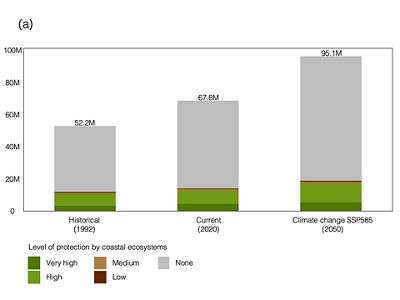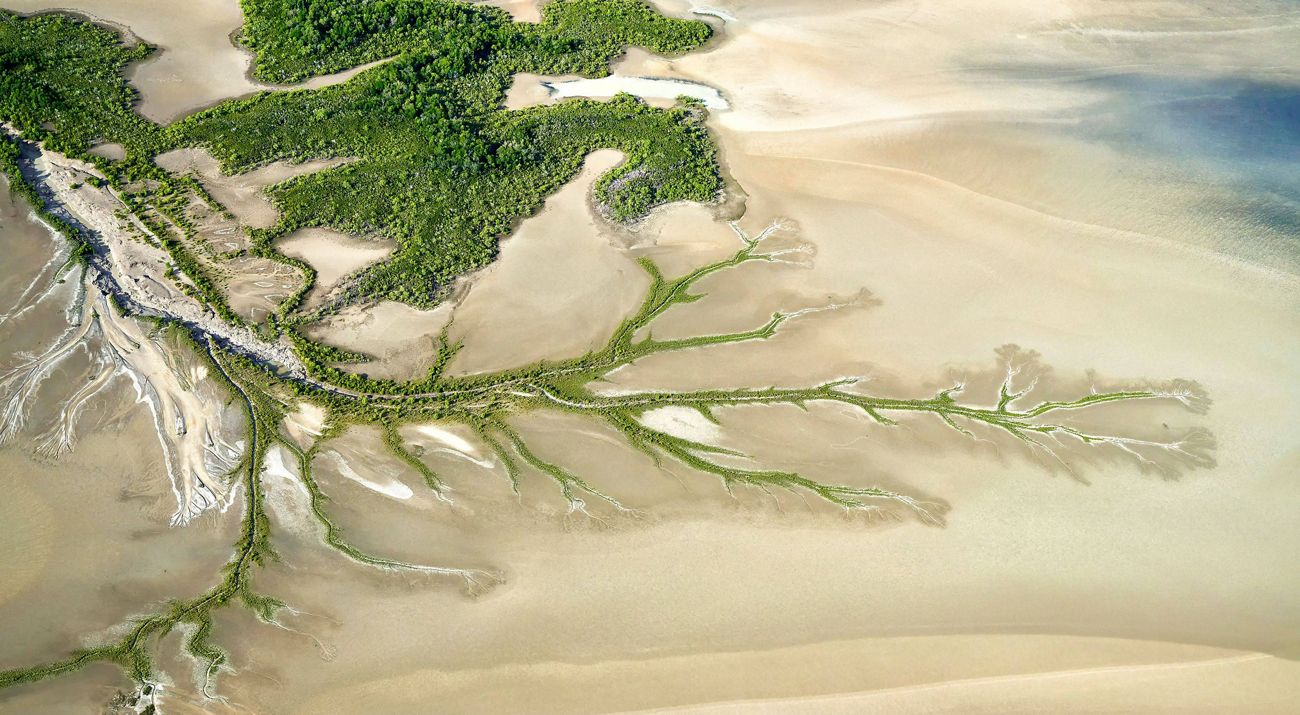New study finds continued loss of coastal ecosystems may jeopardize millions of lives in the face of tropical storms
Research suggests urgent need for conservation and nature-based solutions as human reliance on coastal ecosystems for protection increases
Media Contacts
-
Claire Griffin
Media Relations Coordinator
Email: claire.griffin@tnc.org
68 million people in low-lying coastal areas around the world are at risk from tropical cyclones every year, and ecosystems like mangroves, coral reefs, salt marsh and wetlands serve as some of their best defenses. As climate change increases the frequency and intensity of natural disasters around the world, the value of natural protection against impacts like storm surge, erosion, and wave energy is greater than ever. But a new study in Environmental Research Letters shows that many people in coastal communities are at risk of losing that protection in the face of habitat degradation.
The new paper, titled “Global protection from tropical cyclones by coastal ecosystems – past, present, and under climate change,” showed that over the last 30 years, the destruction of coastal ecosystems was the primary driver of 1.4 million people annually losing the natural protection they previously enjoyed. The research model then estimated that, with climate change, 40% more people in coastal areas (annually around 27 million more annually than are already at risk) could be impacted by tropical cyclones each year. That increase would not even include effects of future population growth or sea level rise, which can be expected to further exacerbate the dangers.
“Coastal communities are vulnerable and losing nature’s protection,” says study co-author Rob McDonald, Lead Scientist for Nature-Based Solutions at The Nature Conservancy. “We hope this paper opens eyes to the fact that we need to prioritize the conservation of coastal ecosystems now, to ensure the defenses people rely on in times of disaster not only remain intact but grow and thrive.”
The challenge coastal communities face to maintain existing protection, much less add to it, is twofold: for one, many ecosystems are struggling to adapt and survive to the harsher conditions caused by climate change, from increasing temperatures to harmful fluctuations in salinity and nutrients. Combine that with the historic levels of habitat degradation caused by increased human development in recent decades, and the natural ecosystems people rely upon for protection are put even more at risk. While daunting, this reality demonstrates the promise of nature-based solutions to climate change. By investing in the health of natural ecosystems like reefs and mangroves, which are notorious carbon sinks known to help counteract climate change, it is possible to protect people from the negative impacts of climate change while simultaneously lessening the severity of climate change worldwide.
“Governments, international organizations and NGOs, communities, and the private sector must act now,” says the study’s lead author Sarah Hülsen, PhD at the Institute for Environmental Decisions, ETH Zürich. “If we don’t, more ecosystems and the protection they provide could be lost, putting millions more people at risk.”
The first and most cost-effective step to ensure coastal ecosystems and the protection services they provide continue into the future is by conserving existing ecosystems. But since climate change will only increase humanity’s need for natural protections, then rebuilding and restoring ecosystems that were previously destroyed (in addition to protecting what already exists) is also worth pursuing in certain geographies. This is particularly true for island states where coastal ecosystems have the capacity to protect large percentages of the population; in Bermuda, for example, mangrove restoration could increase the share of people protected from tropical cyclones by coastal ecosystems from 43% to 81%.

The study was done in collaboration with scientists from The Nature Conservancy, ETH Zurich, World Wildlife Fund, the University of Minnesota St. Paul, and the University of Cambridge. The full paper is available here: https://iopscience.iop.org/article/10.1088/1748-9326/ad00cd
Sarah Hülsen et al 2023 Environ. Res. Lett. 18 124023
DOI: 10.1088/1748-9326/ad00cd
The Nature Conservancy is a global conservation organization dedicated to conserving the lands and waters on which all life depends. Guided by science, we create innovative, on-the-ground solutions to our world’s toughest challenges so that nature and people can thrive together. We are tackling climate change, conserving lands, waters and oceans at an unprecedented scale, providing food and water sustainably and helping make cities more resilient. The Nature Conservancy is working to make a lasting difference around the world in 81 countries and territories (40 by direct conservation impact and 41 through partners) through a collaborative approach that engages local communities, governments, the private sector, and other partners. To learn more, visit nature.org or follow @nature_press on X.
